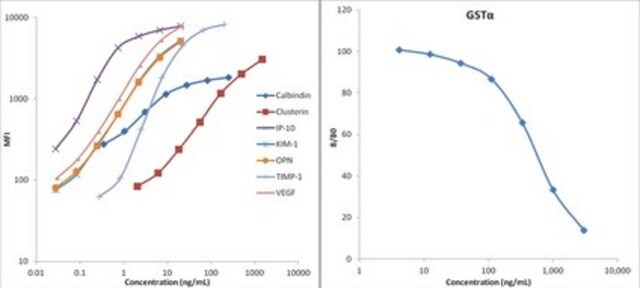MTOX1030
Kidney PTEC Control Cell (SA7K Clone)
Sinonimo/i:
RPTEC SA7K control cell line
About This Item
Prodotti consigliati
Origine biologica
human female renal (proximal convoluted tubule epithelial cells)
Livello qualitativo
Descrizione
1 vial
Forma fisica
liquid
Temperatura di conservazione
−196°C
Descrizione generale
Applicazioni
RPTEC SA7K control cells can also be used to measure compound uptake/efflux by transporters using inhibitors. Precision editing in RPTEC SA7K transporter KO cells provides a more predictive platform for compound uptake/efflux by transporters without the need for non-specific inhibitors.
RPTEC SA7K cells have been validated for use on the Mimetas 3-lane OrganoPlate® in both toxicity and barrier integrity assays ( Z742750).
RPTEC SA7K cells can also be used on the AIM Biotech 3D cell culture chip in toxicity and permeability assays ( DAX01).
Caratteristiche e vantaggi
Qualità
Note legali
Esclusione di responsabilità
Prodotti correlati
Codice della classe di stoccaggio
10 - Combustible liquids
Classe di pericolosità dell'acqua (WGK)
WGK 3
Punto d’infiammabilità (°F)
Not applicable
Punto d’infiammabilità (°C)
Not applicable
Certificati d'analisi (COA)
Cerca il Certificati d'analisi (COA) digitando il numero di lotto/batch corrispondente. I numeri di lotto o di batch sono stampati sull'etichetta dei prodotti dopo la parola ‘Lotto’ o ‘Batch’.
Possiedi già questo prodotto?
I documenti relativi ai prodotti acquistati recentemente sono disponibili nell’Archivio dei documenti.
Articoli
AIM Biotech’s easy-to-use modular platform for conducting 3D cell culture into your research. The AIM Biotech organ-on-a-chip enables you to run simple assays or create more complex microphysiological systems. The versatile platform is suitable for a wide variety of cell types and is customizable for your specific needs.
Human renal proximal tubule epithelial cells (RPTECs) are commonly used to predict human renal drug permeability and to investigate drug efflux. We have generated transporter knockout (KO) cell lines using CompoZr® Zinc Finger Nuclease (ZFN) technology in a proprietary renal proximal tubule epithelial cell line.
Il team dei nostri ricercatori vanta grande esperienza in tutte le aree della ricerca quali Life Science, scienza dei materiali, sintesi chimica, cromatografia, discipline analitiche, ecc..
Contatta l'Assistenza Tecnica.








